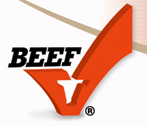
Click here to download the full audio file.
As cattle producers from across the country gather this week for the Annual Cattle Industry Convention, we thought it appropriate to once again catch up with Glynn Tonsor, Associate Professor, Department of Agricultural Economics at Kansas State University. Referring to the All Fresh Beef Demand Index, Tonsor provides an update about beef demand numbers for the end of 2014.
Tonsor 1: "For the fourth quarter of 2014, demand was up notably 13.2% - that's a very large increase, and that follows up on two particularly good quarters when the third quarter was up over 9% and second quarter was over 5%. It's a really good way to wrap out 2014 compared to the fourth quarter of 2013." (:19 seconds)
Tonsor continued:
Tonsor 2: "Going into 2014, it was pretty much known that U.S. consumers were going to be presented fewer beef pounds and in econ speak, if demand was flat, that would've led to higher retail prices. And I have some kind of expectations on how much higher those would've been. The fact that those prices were even higher than anticipated, tells me beef demand improved." (:18 seconds)
Tonsor 3: "I have a hard time separating the fourth quarter from the previous couple of quarters. I mean I recognize that numerically it was stronger than the past two. But we continue to have a pull-down of available supplies and basically the ability to pass on those prices kept going up and up and up. But it's really just a continuation of Q2 and Q3 so I don't want to overreact to just the fourth quarter, but it's really a continuation of a good story from the previous couple quarters. And at the end of the day, I think the public has been surprisingly willing to pay higher prices than they quote unquote have to." (:28 seconds)
Tonsor gives a final note to joint checkoff committee and subcommittee members gathering this week in San Antonio to discuss the checkoff's promotion, retail, foodservice and consumer information programs that are focused on demand-building.
Tonsor 4: "Those record prices that were observed you know anybody that sold an animal in 2014 got a higher price for it than they probably anticipated in most cases particularly the cow/calf producer that was driven not just by the tight supply, but also those prices were higher because beef demand was so strong. Almost half of the price increase that occurred in the second half of 2014, I can attribute as much to demand strength as I can tight supply. Tight supplies have a role, but the historically high cattle prices that were observed would not have been as high if we didn't have strong beef demand. But as the tight supply part of the story eases, it's going to become even more obvious the role of demand." (:37 seconds)
*Here's another great reference for understanding the difference between demand and consumption. Tonsor posts regular demand strength updates to this webpage.
Reporting for the beef checkoff, I'm Melissa Sandfort. For more about your beef checkoff investment, visit MyBeefCheckoff.com.
 UNDERSTANDING THE BEEF CHECKOFF PROGRAM
UNDERSTANDING THE BEEF CHECKOFF PROGRAMThe Beef Checkoff Program was established as part of the 1985 Farm Bill. The checkoff assesses $1 per head on the sale of live domestic and imported cattle, in addition to a comparable assessment on imported beef and beef products. States may retain up to 50 cents on the dollar and forward the other 50 cents per head to the Cattlemen's Beef Promotion and Research Board, which administers the national checkoff program, subject to USDA approval. www.mybeefcheckoff.com
2.3.2015